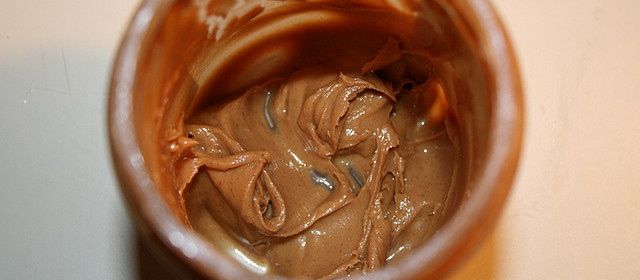Ever pricier peanut butter is forcing food banks to get creative
For some low-income families it may mean reinventing breakfast
Share

Having your mouth glued shut with peanut butter is a delightful experience essential to every North American childhood, but the brown spread has always been popular with food banks as well because it has a high nutritional value–and it’s affordable. No longer, though. A one-kilogram jar is now selling for $7 or more, and charities across Canada are feeling the pressure to find other ways to feed a client base that’s grown considerably since the financial crisis.
On the last week of February, and five months into the Calgary Food Bank’s (CFB) budget year, there were only 2,500 jars of peanut butter left in the warehouse–enough for just one more week. For CFB’s 147,000 regular clients, that may mean having to switch to a very different diet very soon. When stocks of the golden spread run low, the bank replaces peanut butter jars with tuna cans, according to Kathryn Sim, a CFB spokesperson. “We substitute a protein for a protein,” she says. “That might make someone’s breakfast a little more challenging, but our goal is to make sure people are walking away with nutritionally balanced groceries for a week.”
Four years ago, CFB started assembling food hampers based on the advice of the Canada Food Guide. The empty calories from margarine were dropped, with the savings going toward peanut butter purchases. That translated into a $50,000 budget for the golden butter alone–but now even that doesn’t seem enough.
The culprits for the price increase, food companies and analysts say, are a piffling peanut yield in the U.S. due to a spell of dry weather, and the perennial problem of American farmers choosing more lucrative crops, like cotton or corn. Last November, Kraft Canada announced it would hike the price of its peanut butter by 35 per cent beginning at the end of January 2012. In the U.S., Kraft’s mark-up was 40 per cent, and food-makers J.M. Smucker and ConAgr Foods have implemented similar increases.
At the same time, food banks have to support an expanding client base. In Calgary, for example, the number of low-income households who need free groceries has grown by 70 per cent since the financial crisis, and nearly half of last year’s recipient families had children. Nationally, 850,000 Canadians visit a food bank every month, a 26 per cent increase since the start of the recession in 2008, according to Food Banks Canada (FBC), which represents 3,450 banks and agencies.
Of course, donations, including those from the peanut butter makers themselves, have helped cushion the impact of the price hike. At CFB, for instance, Kraft is “a major supporter,” says Sim. And FBC says it’s confident private and corporate gifts will help offset rising costs, especially in urban Canada.
Banks in rural areas, however, are less nimble. “[These] food banks have smaller communities to draw from for support, less accessibility to corporate donors, and many are in more remote communities, therefore have higher transportation costs,” FBC spokesperson Marzena Gersho wrote in an email. The food bank in Deep River, Ontario, an Ottawa Valley town of about 4,000 people, for example, has no access to Kraft’s donor budget and must rely heavily on the local grocery store, from which it sometimes purchases cosmetically damaged goods at reduced prices.
“We are confident that the public is still going to donate peanut butter regardless of the cost,” Gersho said. Maybe, but you can’t begrudge consumers donor fatigue, what with enormous personal debt loads and the rising costs of almost everything. Getting pricey peanut butter from the cupboard to the donation box might take a trendy new diet, if not an epidemic of allergies.